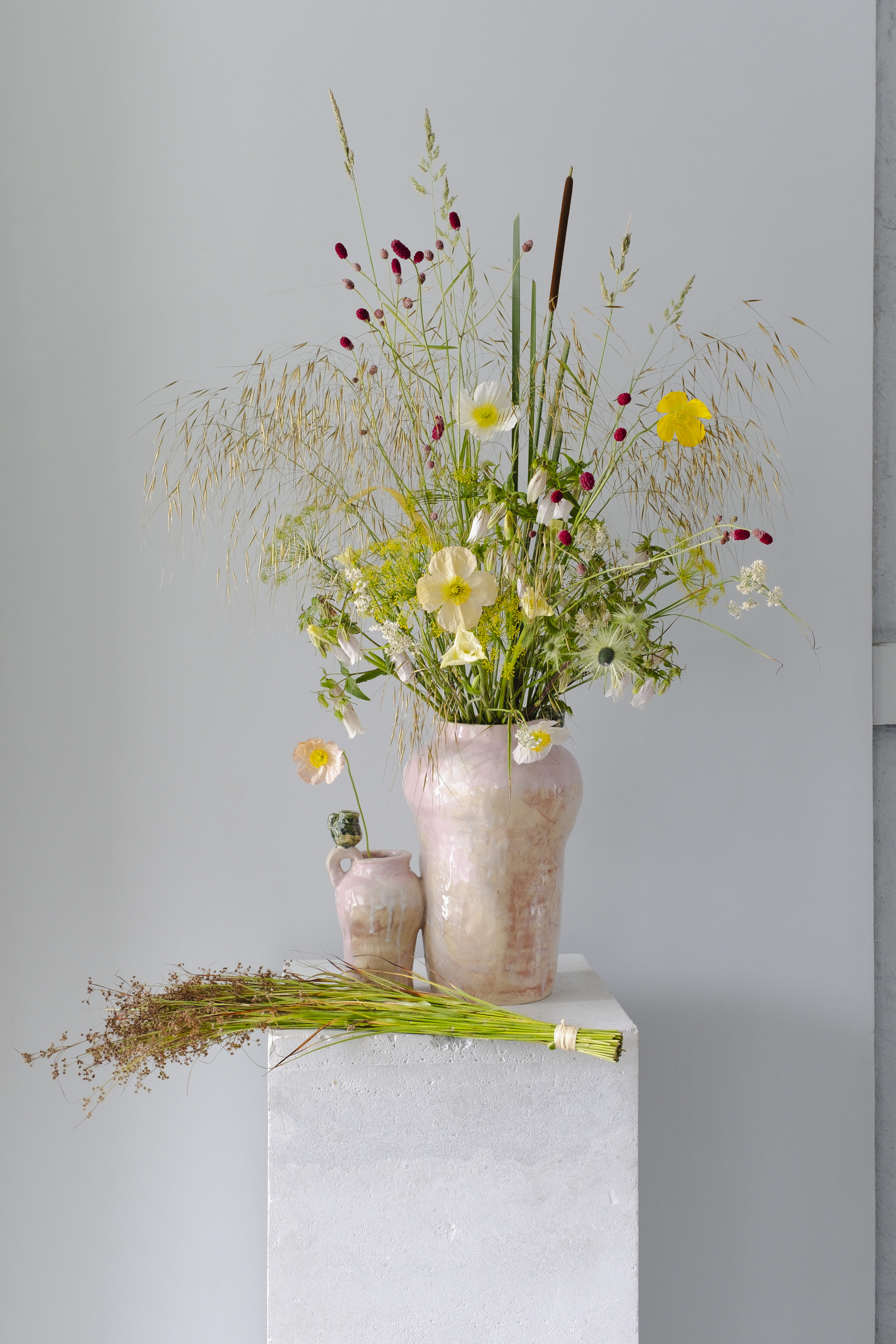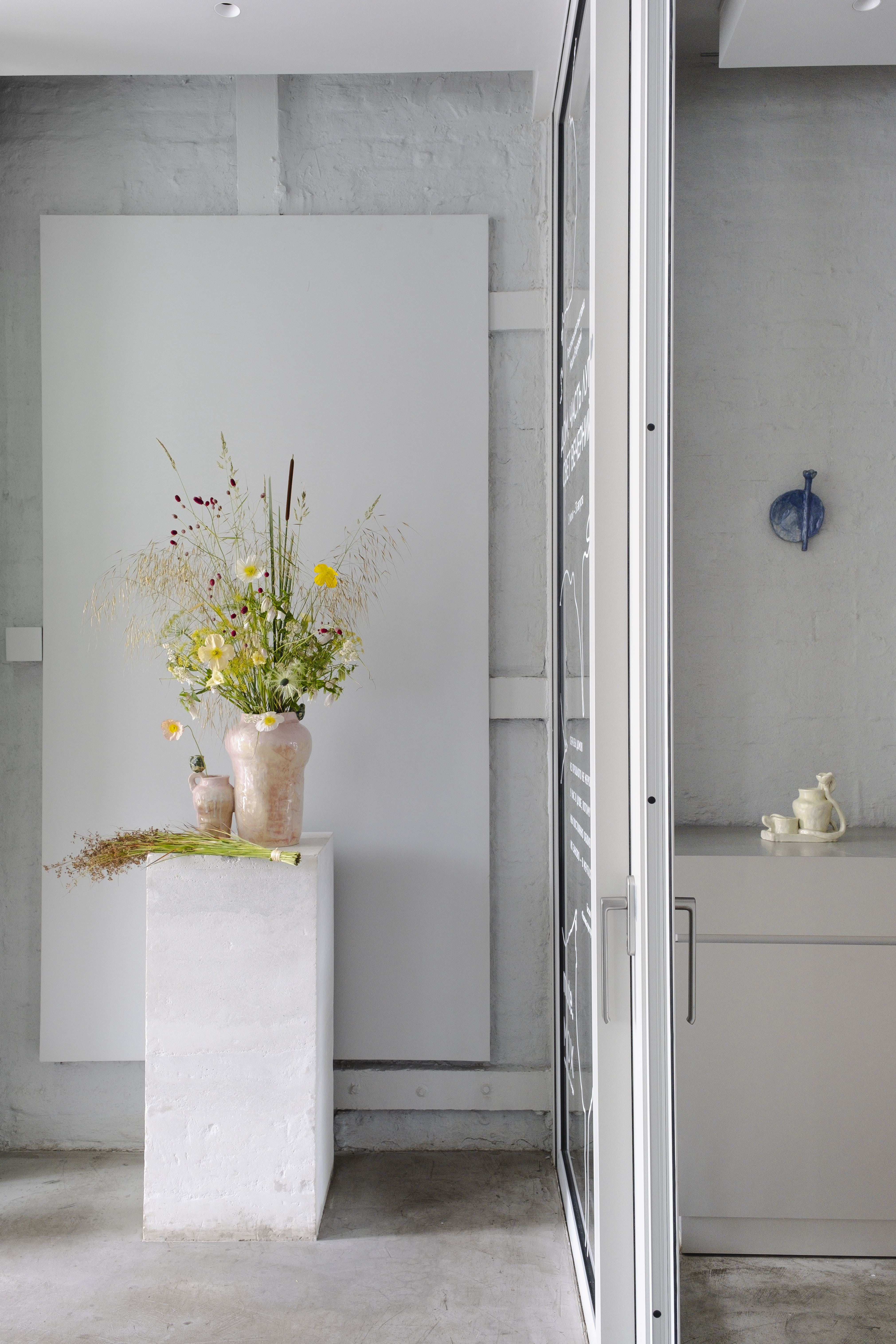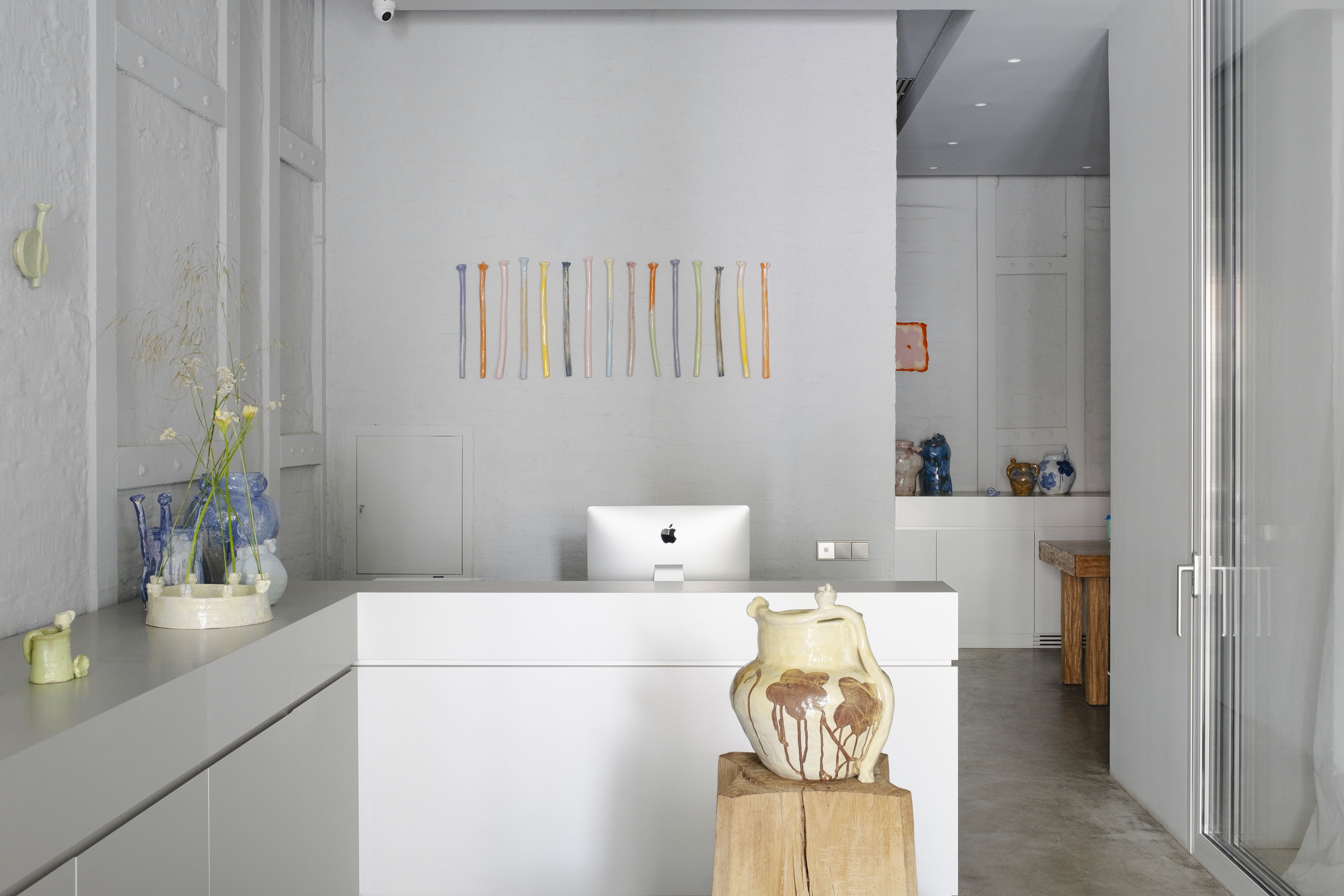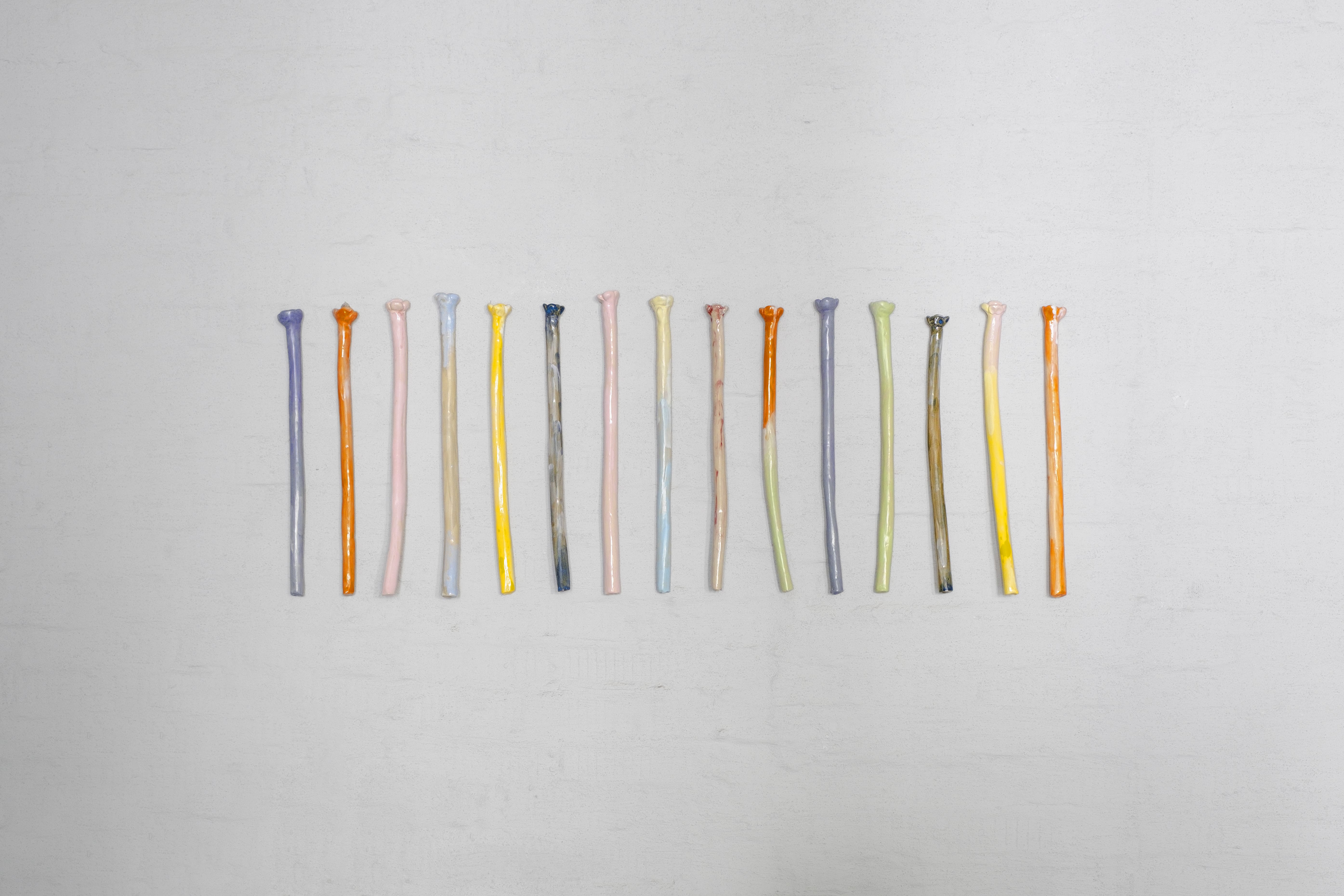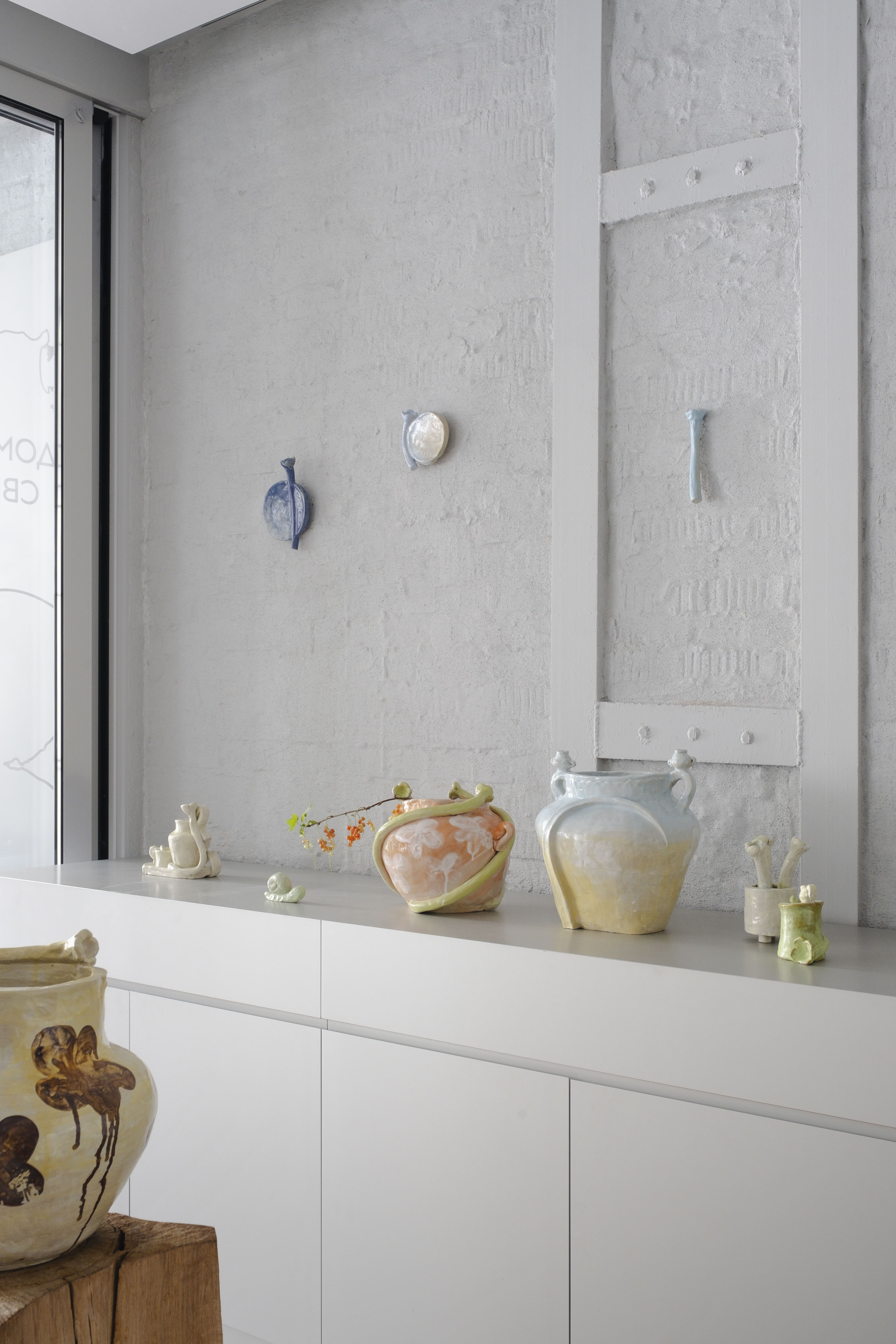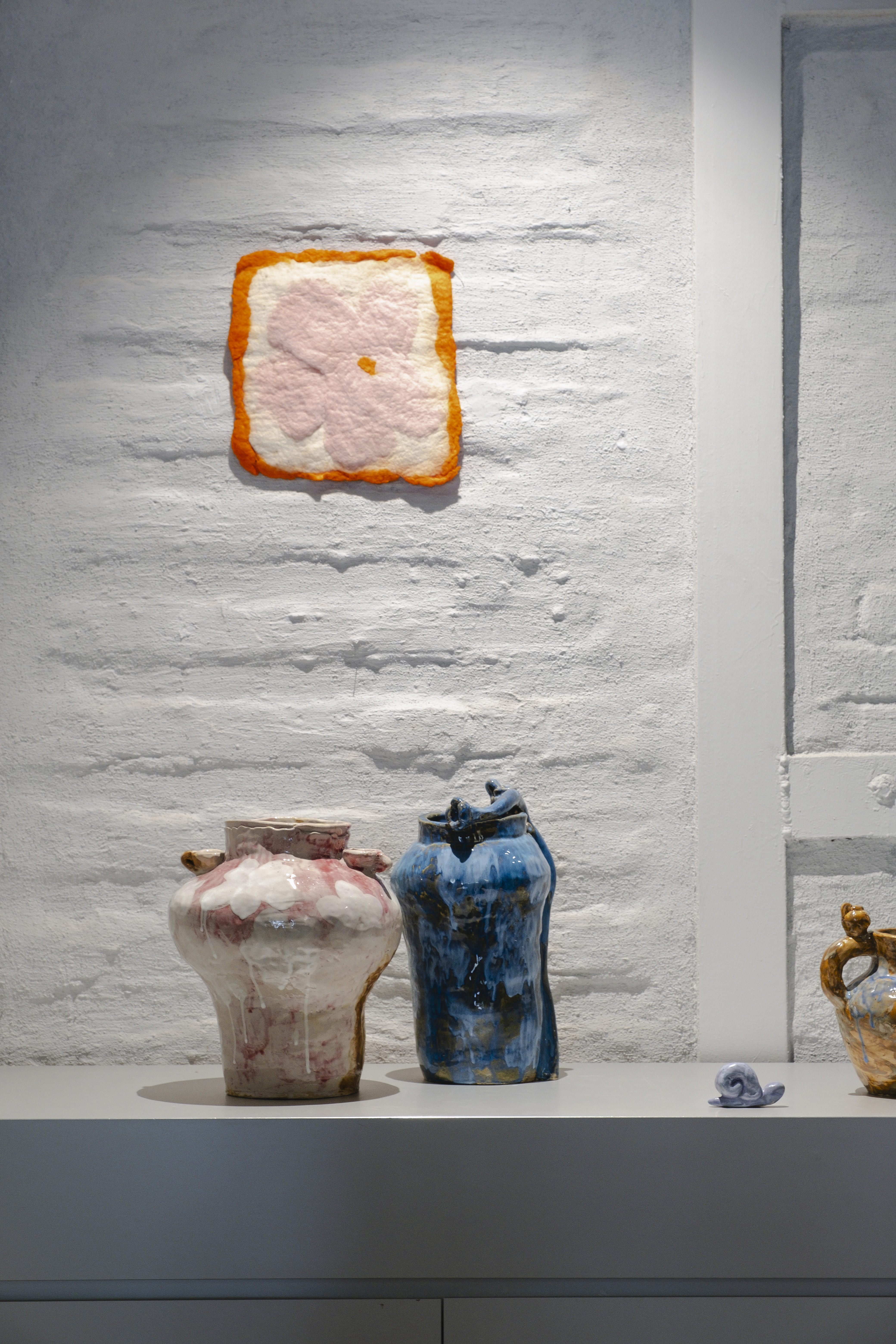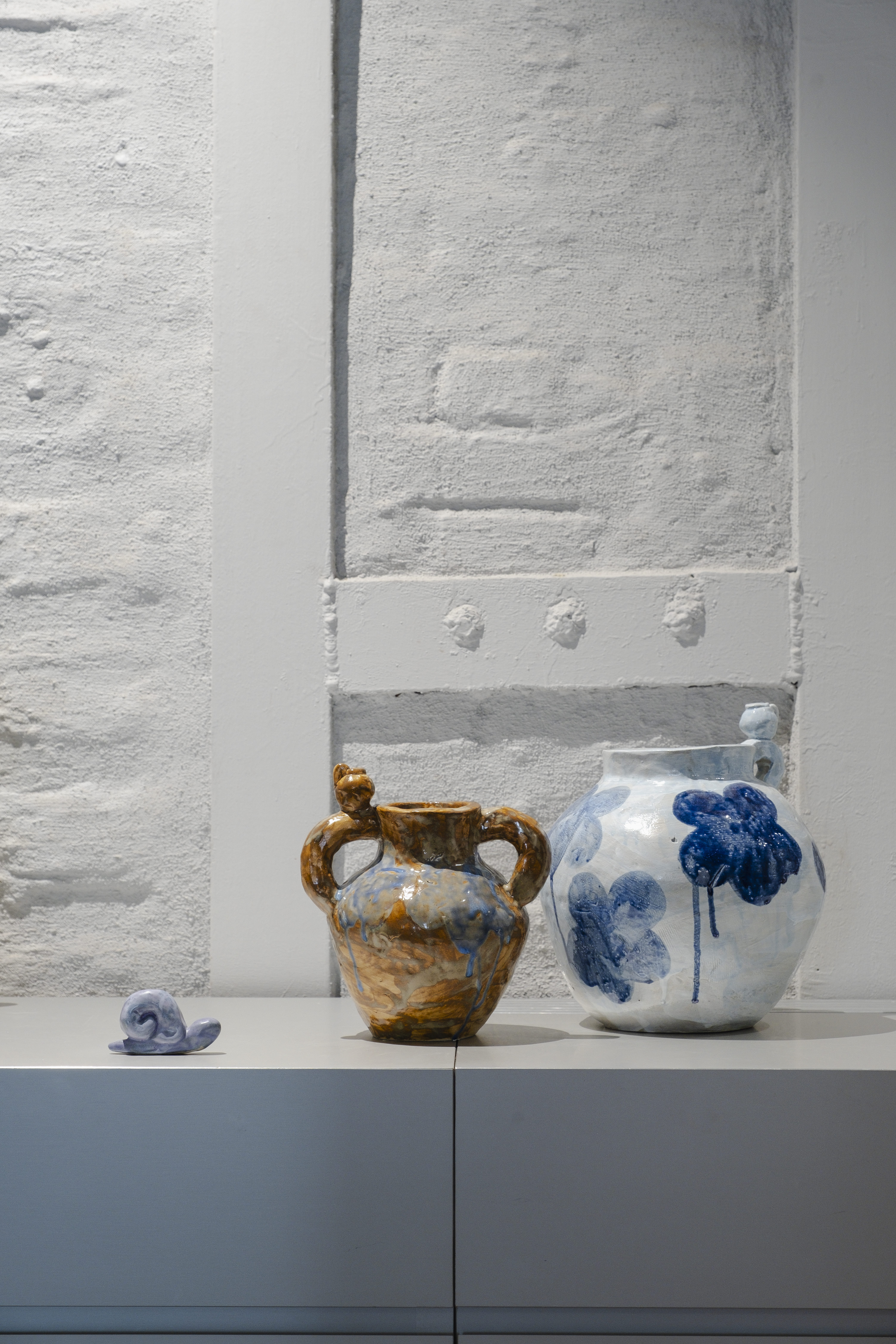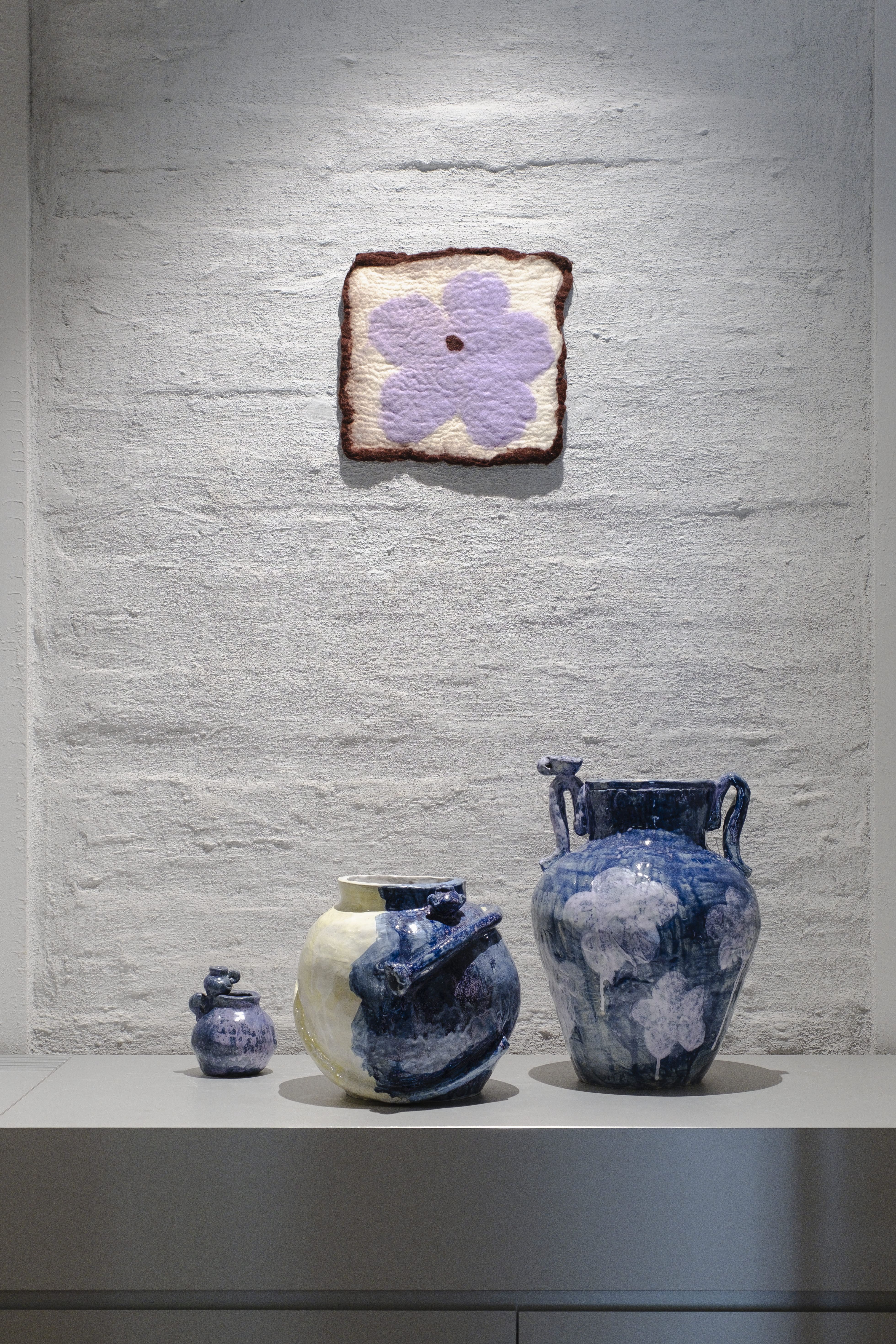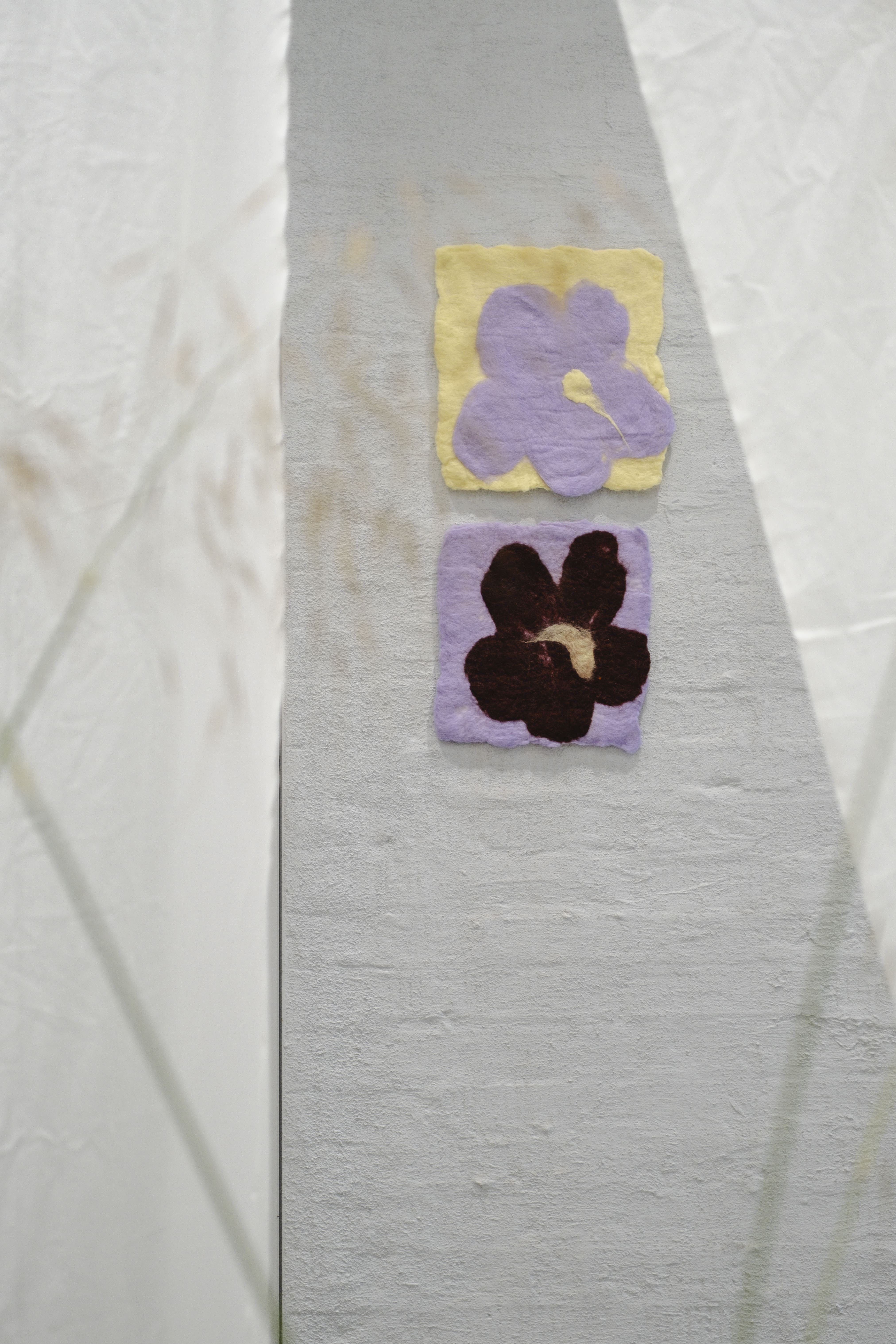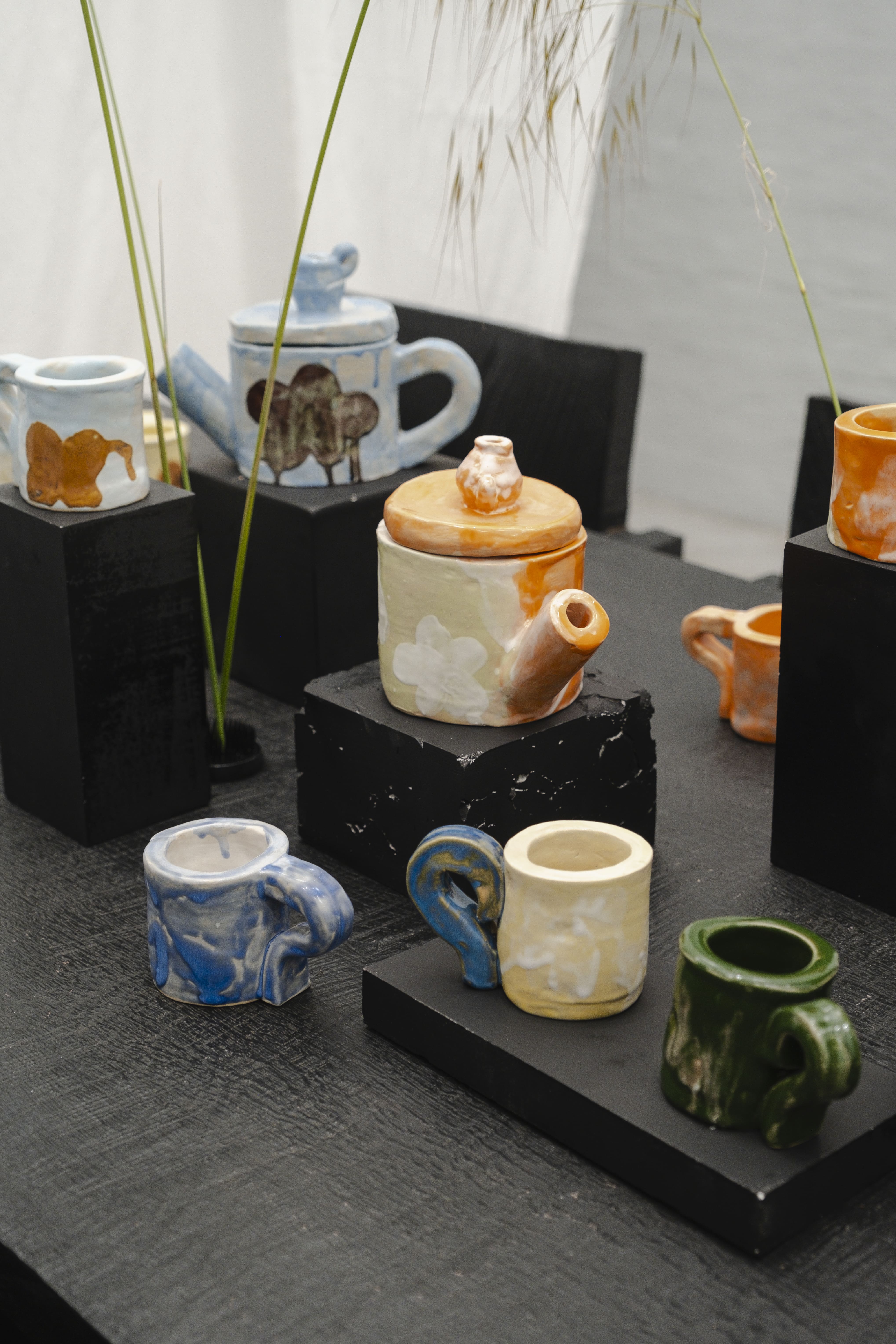The images of houses from our past do not fade in our souls,
because we constantly inhabit them anew—in our dreams.
Gaston Bachelard, The Poetics of Space
Ceramics are the primary medium in the practice of artist Masha Egorova. For working with a material that is primarily associated with the applied and utilitarian arts, she deliberately chooses familiar, everyday forms: vases, plates, mugs, boxes. The functionality of these objects, however, is deceptive—the artist does not strive to create a perfect or convenient design item. On the contrary, she uses these forms as an opportunity for sculptural experiments: pitchers are deformed, the handles of cups and pitchers are disproportionately large, and in vases, a wide mouth is replaced by a barely noticeable opening between two pieces of clay. These objects could belong to an interior—but not a real one, rather a painted one.
The exhibition title "Home, a Meadow's Part, Evening Light" is borrowed from Rainer Maria Rilke's poem "Every object cries out: 'Take heed, feel!'" (1914). This poem, like the body of the poet's famous "thing-poems," is concerned with immersion in the symbolic meaning and affective properties of objects. The French philosopher Gaston Bachelard repeatedly refers to this poem in "The Poetics of Space" (the artist's favorite book), analyzing how the perception of the material interacts with a person's inner world. Bachelard's described ideas of the house as a symbol of childhood and the dream of a place that provides a sense of unconditional safety and peace became the starting point for this project.
Masha Egorova's exhibition at the MOX Bureau consists of several zones, forming a fragmentary image of an imaginary house. For the artist, such fragmentation, this rejection of totality, is associated with how memory works, with its selectivity. The project includes a series of ceramics created for the exhibition and the first textile works in Masha's practice—felt rugs made using the wet felting technique. For Egorova, the house as a concept of a safe place must necessarily be surrounded by a garden: her ceramics at the exhibition sprout shoots or are entwined with vines, and the felt rugs evoke a blooming meadow.
The central object in the space is a tent made of translucent fabric, reminiscent of a childhood sheet fort. In "The Poetics of Space," Gaston Bachelard pays special attention to the hut as an elementary architectural form that provides a sense of shelter, describing it as the poetic image of the primal refuge, its archetype.
Reflecting in her project on how one can find one's safe space in the modern world, the artist, following Bachelard, suggests creating safe spaces for oneself wherever possible—in the imagination, in a dream, or inside a fragile tent.
Katya Savchenko


